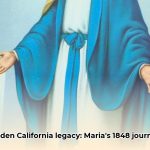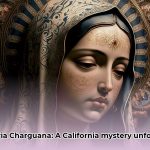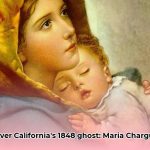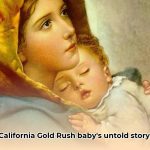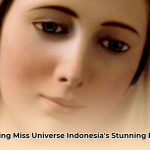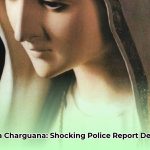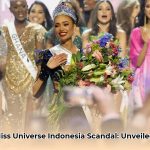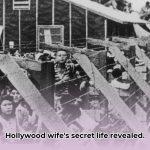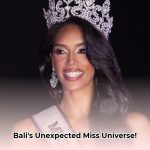Imagine a woman living in the shadows of California history: Maria Catarina Charguana. Born in 1848 at Mission San Fernando Rey de España, her life unfolded during the state’s turbulent transition from Mexican to American control. While fragments of her story exist – her mixed Indigenous and European heritage, the transformative events surrounding her – much remains a mystery. This historical exploration assembles her life from historical records and cultural context. We’ll delve into the impact of the Mexican-American War and the California Gold Rush on her world, highlighting how researchers strive to uncover her complete narrative and showcasing a woman whose legacy deserves recognition. Learn more about her life at this dedicated profile.
Maria Catarina Charguana: A Life Emerging in 1848 California
Maria Catarina Charguana’s life, beginning in 1848 at Mission San Fernando, presents a complex historical puzzle reflecting the challenges faced during a period of immense socioeconomic change. Her story embodies the cultural blending that defined California during its transition from Mexican to American rule. Envision California at this time: a land undergoing rapid transformation, where Indigenous cultures intersected with European and American influences. Maria’s existence represents California’s past, a convergence of Luiseño, Spanish, and American identities.
Her father, Jean Baptiste Charbonneau – son of Sacagawea, the Shoshone guide for the Lewis and Clark expedition – brought a legacy of exploration. Her mother, Margarita Sobin, a Luiseño woman, connected her to the California landscape’s traditions. This diverse heritage shaped her experiences and influenced her sense of belonging.
Baptized at the mission a few weeks after her birth, her baptismal record entry #1884 lists her as “Charguana”, likely her mother’s family name. This raises questions about her parents’ relationship. It suggests that Jean Baptiste Charbonneau, Maria Catarina’s father and Sacagawea’s son, and Margarita Sobin may not have had a marriage formally recognized by the church or the nascent American authorities.
The historical context is vital to understanding her life. The Mexican-American War had just concluded, and the Gold Rush was transforming California into a land of opportunity and instability. Imagine the impact these events had on Maria, living amidst shifting loyalties and cultural changes, her family navigating the mission system and the evolving social landscape.
To uncover more of Maria’s life, researchers are pursuing several avenues of investigation.
-
Genealogical Research: Tracing her descendants could reveal family stories and details about her history. Family stories passed down through generations and provide insight into her legacy.
-
Luiseño Oral Histories: The Luiseño people’s traditions hold crucial information missing from written records. These stories, passed down, might shed light on Maria’s community, role, and daily life in 19th-century California.
-
Mission San Fernando Archives: The records at Mission San Fernando offer another source of information. Detailed reviews of baptismal records, wills, land deeds, and legal documents may contain clues about Maria’s family, circumstances, and ties to the mission and community.
Maria Catarina Charguana’s story is more than personal; it’s a microcosm of California’s historical narrative. The search for her life brings to light a story excluded from the official record. Her story represents mixed-race individuals who shaped California’s past yet whose voices remain unheard. It’s a story of resilience, adaptability, and the power of heritage in the face of change. By examining available evidence and contextualizing it within the broader history of California, we can illuminate Maria Catarina Charguana’s story.
The effort to understand Maria Catarina’s life continues. Collaboration between historians, museums, and educators can ensure her story takes its place within California’s history. This collaboration involves:
| Stakeholder | Short-Term Goals (0-1 year) | Long-Term Goals (3-5 years) |
|---|---|---|
| Historians/Researchers | Intensive genealogical research; collection and analysis of Luiseño oral histories; thorough examination of Mission San Fernando archives. | Publication of a comprehensive biography of Maria Catarina Charguana; presentation of research findings at academic conferences; development of educational materials that showcase her life. |
| Museums/Societies | Creation of exhibits and educational resources focusing on Mission San Fernando, the Luiseño people, and Maria Catarina’s life. | Establishment of a dedicated research fund; development of exhibits linking to broader themes of California’s cultural history, as well as creating outreach programs to educate and engage the public. |
| Educators | Incorporation of Maria Catarina’s story into school curricula; development of age-appropriate learning materials. | Creation of accessible online resources and interactive tools to explore her story and broader themes of 19th-century California. |
Uncovering Maria Catarina Charguana’s story is about shaping the future by creating an inclusive record of California history. It’s a legacy of understanding, recognition, and honoring lives overlooked. The journey continues.
Tracing the Legacy: Discovering Maria Catarina Charguana’s Descendants
Key Takeaways:
- Maria Catarina Charguana’s life bridges Indigenous, Spanish, and possibly French-Canadian cultures.
- Her birth record offers a starting point, but her later life remains undocumented.
- Tracing her descendants requires a multi-pronged approach.
- Genealogical research is limited, demanding innovative strategies.
The Enigma of Maria Catarina
Born in 1848 at Mission San Fernando Rey de España, Maria Catarina Charguana’s life embodies a pivotal era in California. Her heritage – a blend of Luiseño, Shoshone, and possibly French-Canadian ancestry – reflects the region’s social fabric. Her father, Jean Baptiste Charbonneau, was Sacagawea’s son, adding another layer to her historical significance. Yet, details about her life remain scarce, presenting a challenge for researchers and descendants alike.
Navigating the Historical Maze
Records from Mission San Fernando document her baptism; however, identifying details about her mother, Margarita Sobin, proves challenging. Inconsistencies in spellings of her last name (“Charguana” versus “Charbonneau”) hint at the social complexities of interracial families in 19th-century California. This necessitates a deep understanding of the challenges faced by marginalized groups in accessing and interpreting historical records.
Steps to Uncover Maria Catarina’s Legacy
-
Archival Deep Dive: Begin with Mission San Fernando’s archives. Explore baptism, marriage, and death records. Scrutinize census data for California during the relevant periods. Look for variations in spellings of “Charguana,” “Charbonneau,” and “Sobin”.
-
Community Engagement: Connect with the Luiseño community. Oral histories and family traditions could hold clues. Their knowledge of family lineages could illuminate connections missing in formal records.
-
Genealogical Databases: Explore online genealogical databases like Ancestry.com and FamilySearch.org. These resources may reveal family connections through marriage records, census information, or DNA matches.
-
Collaborate with Experts: Partner with historians specializing in California’s Indigenous populations and genealogical professionals. Their expertise can help navigate obscure records and interpret complex family structures.
-
DNA Testing: Consider DNA testing to potentially validate connections to Maria Catarina’s lineage. Comparing DNA samples with potential descendants could clarify her family tree and potentially reveal unseen connections.
Overcoming Challenges
The search for Maria Catarina’s descendants presents hurdles. The limited surviving records and the challenges faced by women, especially Indigenous women, are significant. Moreover, the passage of time has made records less accessible or more difficult to interpret.
The Ongoing Quest
Despite these challenges, the search for Maria Catarina Charguana’s descendants remains a worthwhile endeavor. Her story represents a vital piece of California’s history, and uncovering her family’s journey can enrich our understanding of the state’s diverse heritage. By combining archival research, community engagement, and expert guidance, we can continue to piece together the fragments of her life and celebrate her enduring legacy.

